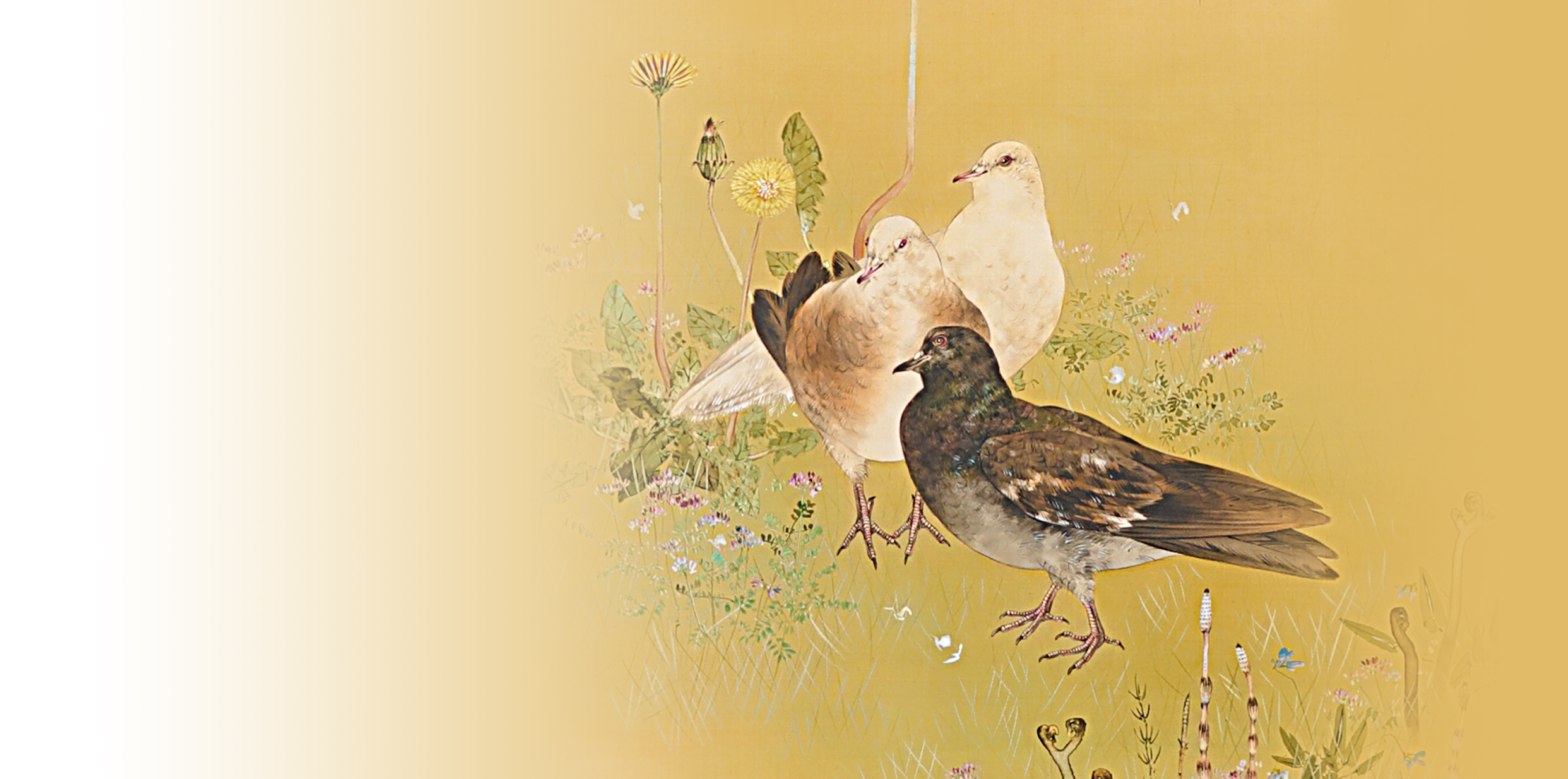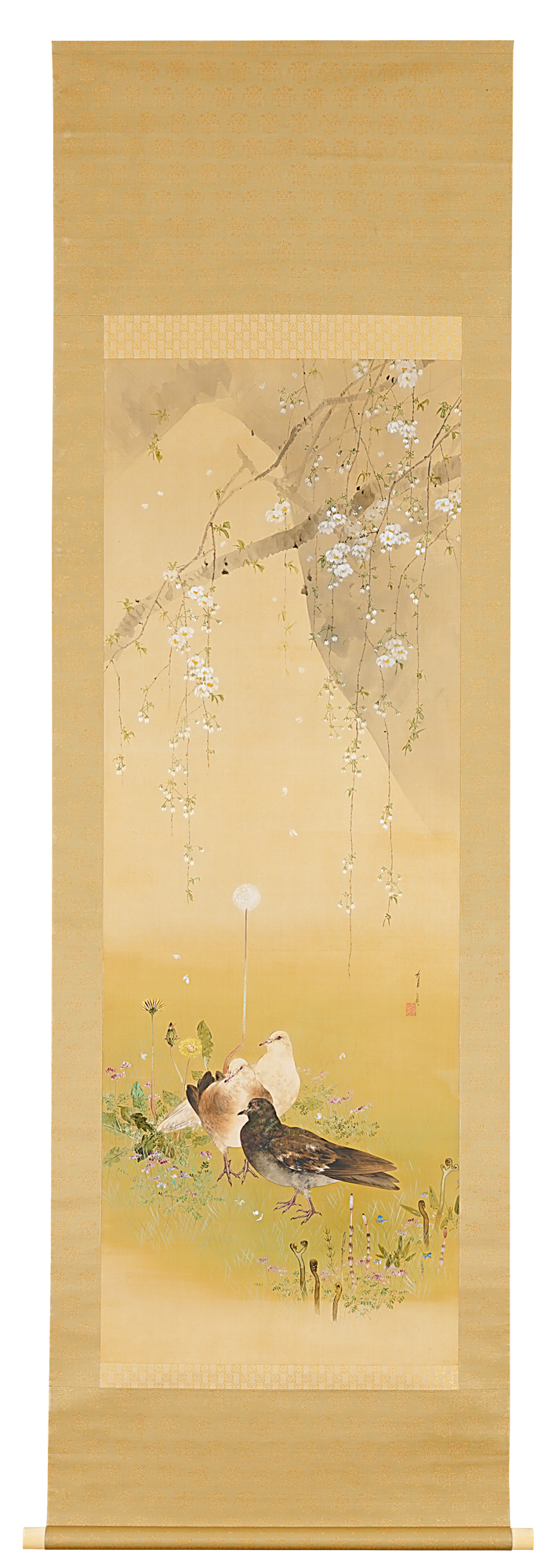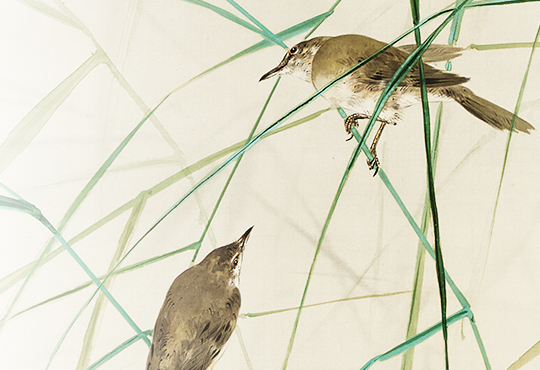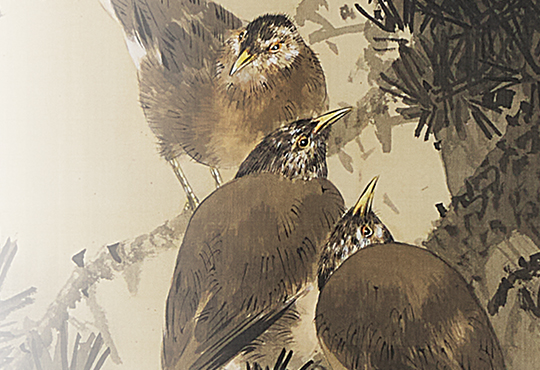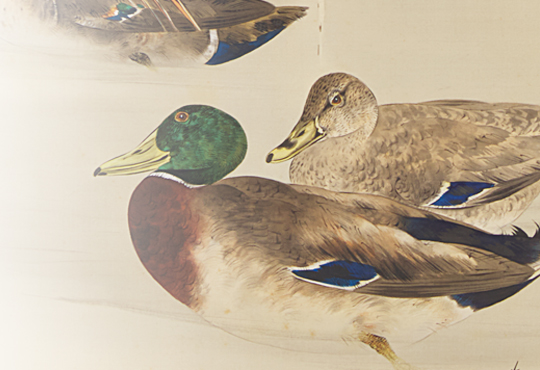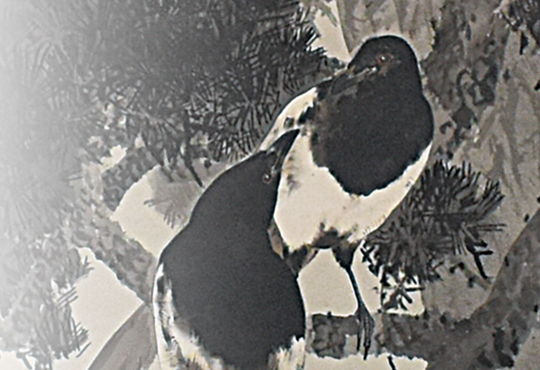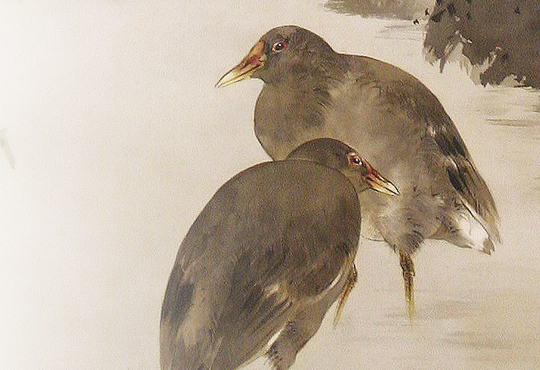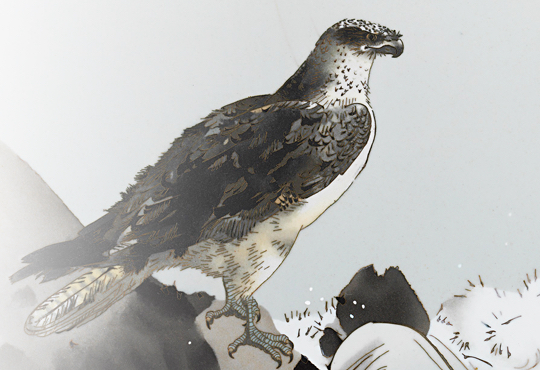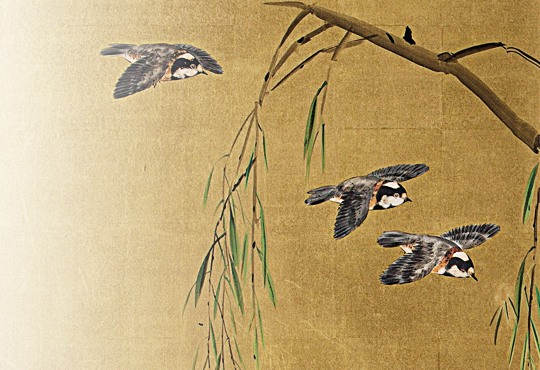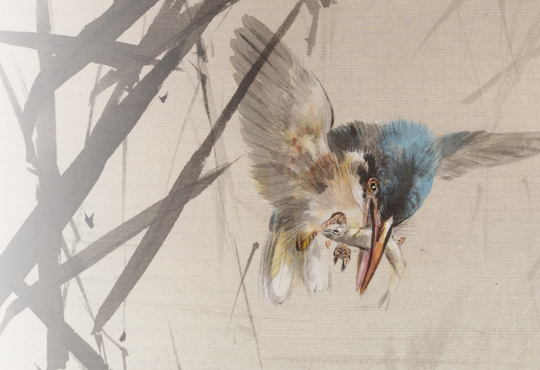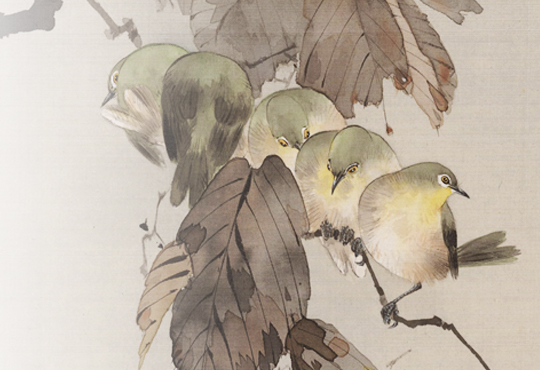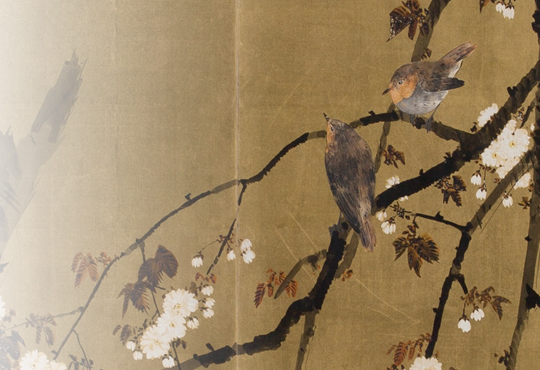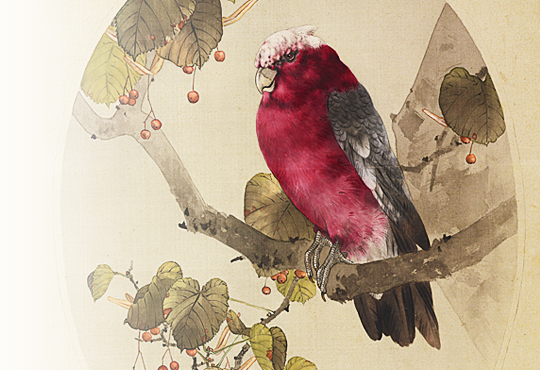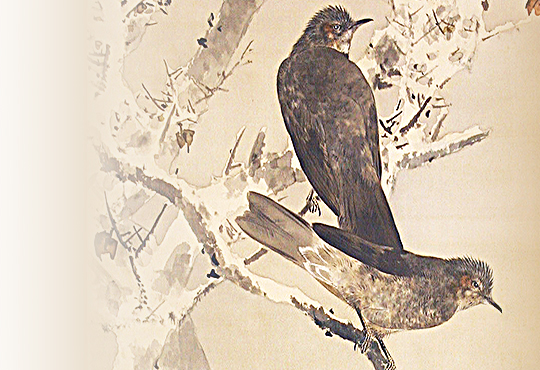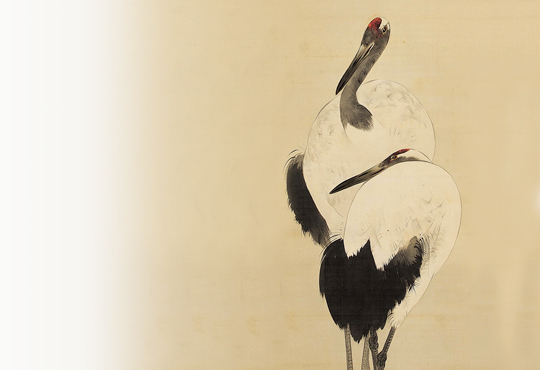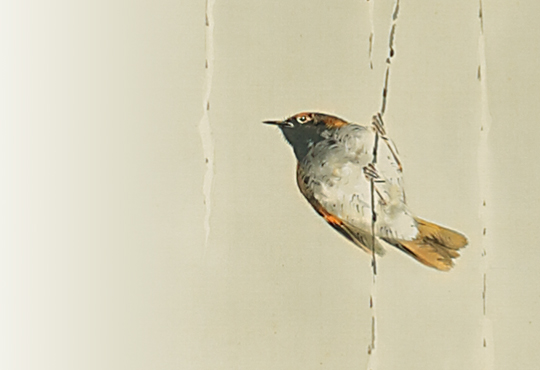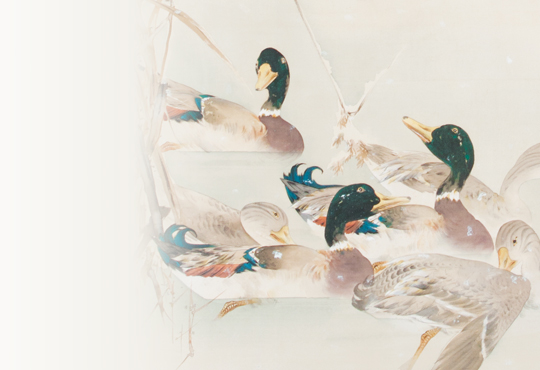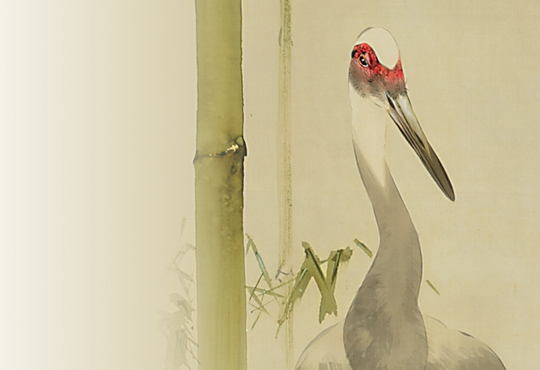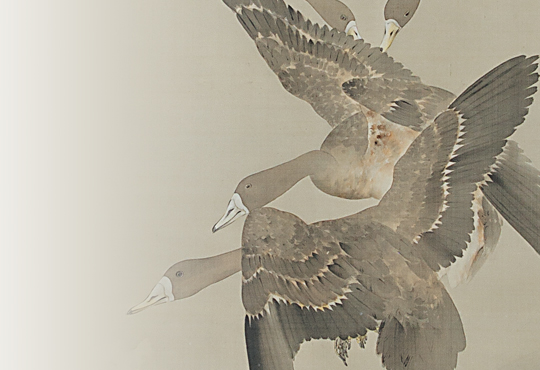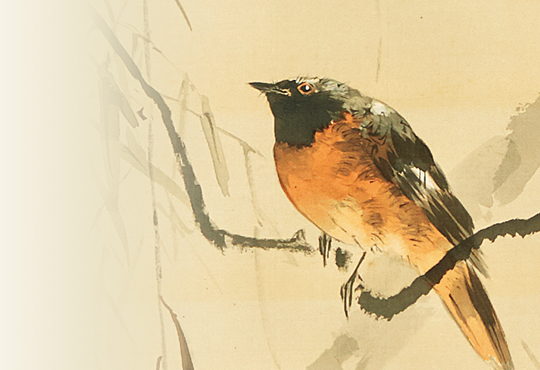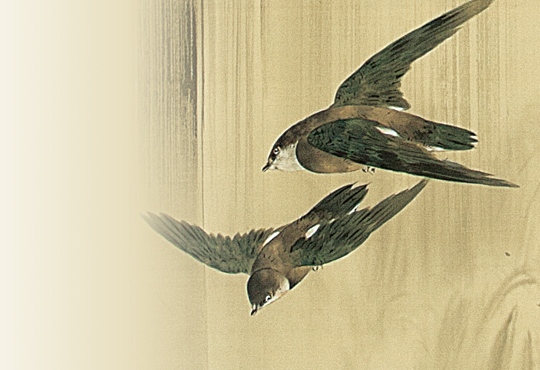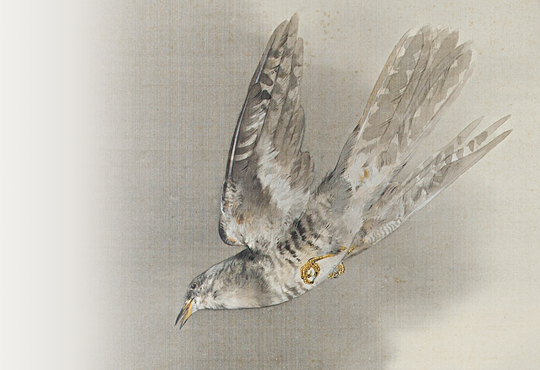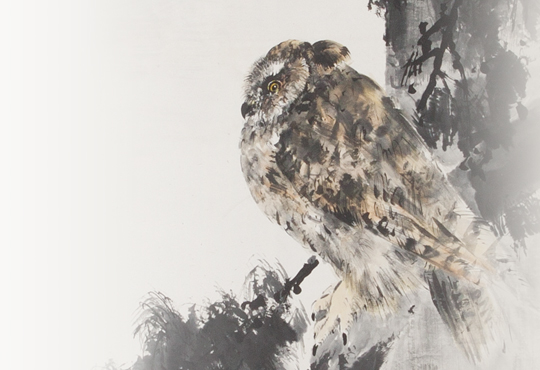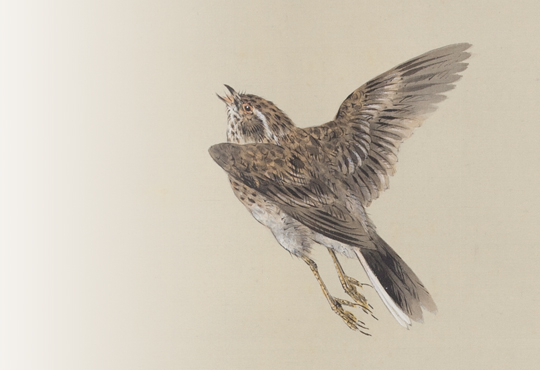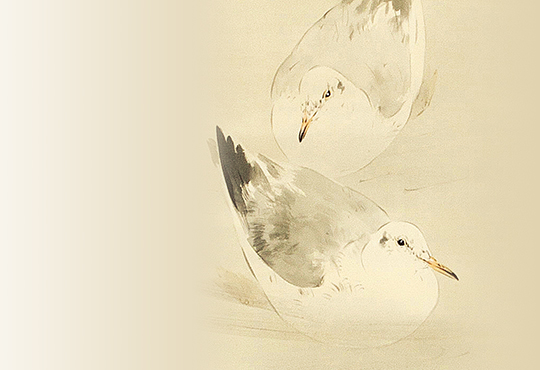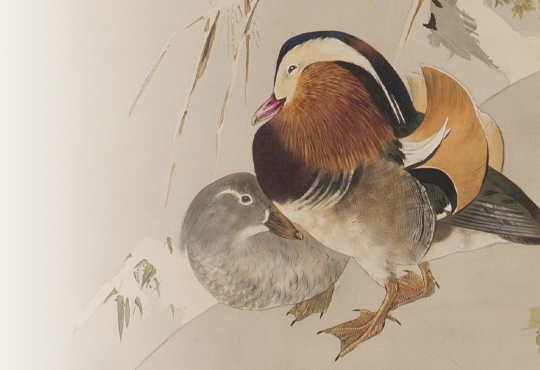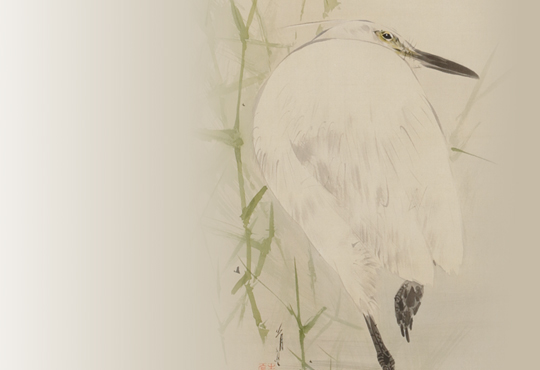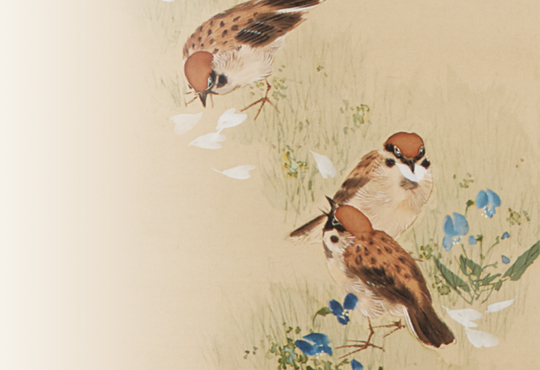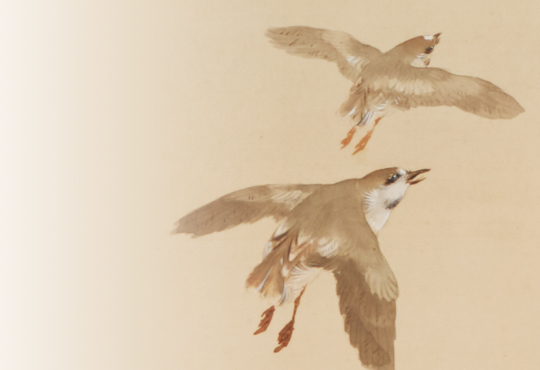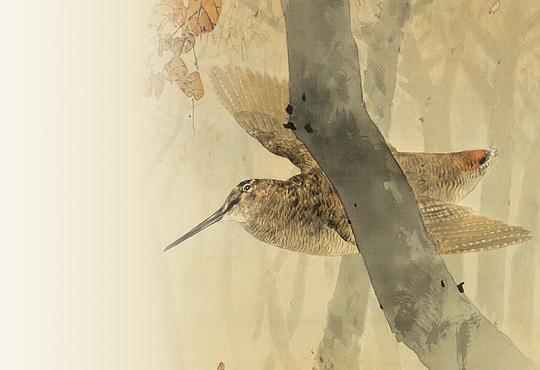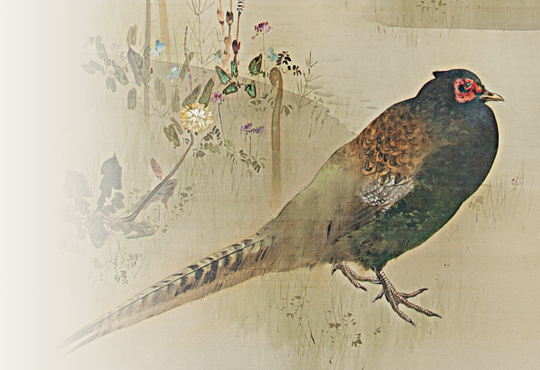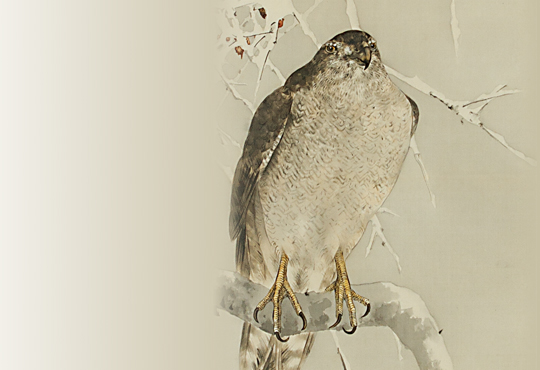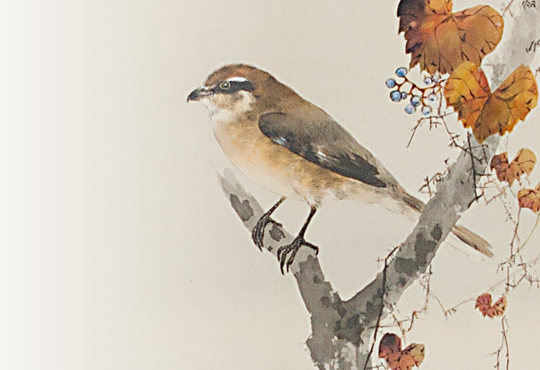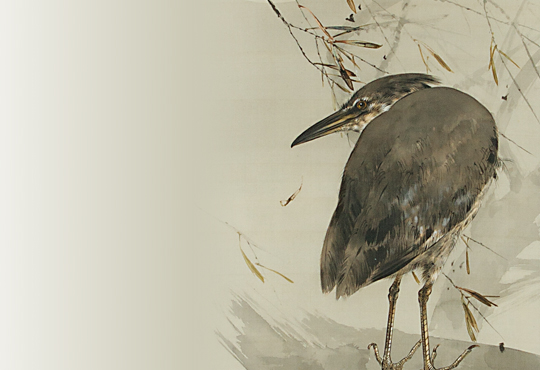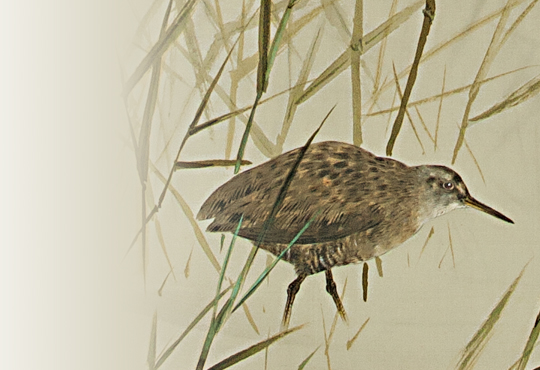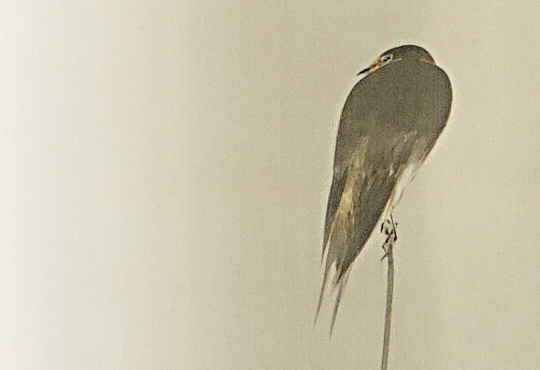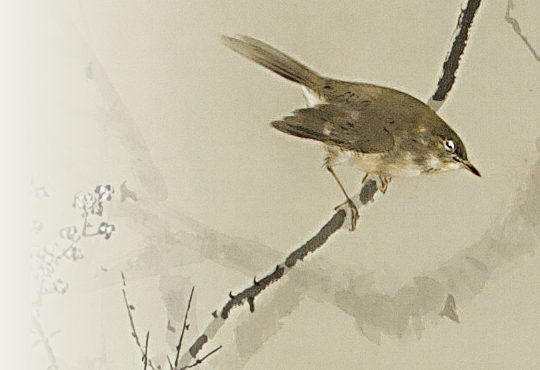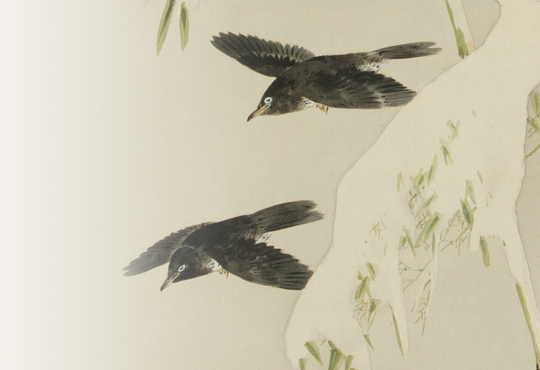Color on silk, with a box signed and sealed by the artist
154×55㎝/231×71㎝
vol.16 The Importance of a Globally Familiar Bird: Pigeons in Spring
Although most of Seitei’s themes concern the wild birds of Japan, there are definite exceptions. One of which would be the Rock Dove (Columba livia). A species of wild pigeon that originally habituated Southern Europe, North Africa, the Middle East and South Asia, the bird was also bred by humans worldwide as food, pets, message carriers or racers. They were introduced to Japan around one thousand years ago and were released in small numbers at Buddhist temples. By the early 20th century, a new race of message-carrying pigeons were imported from Europe and the Japanese military began to use pigeons as messenger birds for communication. After world war II, as pigeon racing gained popularity, they began to be bred by the general population. Because these domesticated pigeons then started to breed outdoors, most pigeons in the present are generally seen around urban landscapes.
Seitei has made several works of pigeons, such as the highly regarded “Pigeons at Sensoji (Asakusa Kannon Temple)” (Freer Gallery of Art), as well as the excellent “Gingko and Pigeons” (Saita Museum) and “Japanese Maple and Pigeons” (Private Collection). In this work, three pigeons are depicted playing in a spring field, and amongst Seitei’s oeuvre, this work appears to be the brightest and most endearing. As weeping cherry blossoms bloom above, the pigeons are surrounded by ferns and small flowers, such as dandelions, vetch, and violets. With a gentle color scheme and no shading, every aspect of the picture is an emanation of spring at its brightest prime.
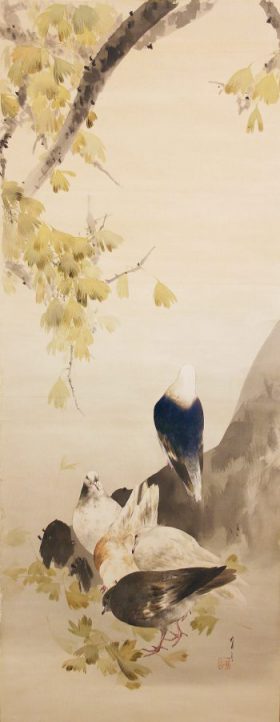
Watanabe Seitei”Gingko and Pigeons”
(Saita Museum)
Considering this experience with success, Seitei must have been confident that his artistic and technical skill had global appeal and, as such, he must have realized the pigeon was also a universally appealing subject. Moreover, because Seitei initially may have encountered many birds in Europe, he would have noticed that the pigeon was also a familiar bird in Europe. Since much of Seitei’s artistic value and appeal are based on the incredible realism of his work, perhaps he may have thought that a universally recognized bird, like a pigeon, would best express his realism. Some pigeons would be depicted with amidst colorful Japanese trees, like the cherry blossom, gingko and maple tree, in his later paintings. Those trees were already familiar in the West due to an influx of garden art. Thus, it could be that said that these works, which combined the pigeons with these Japanese trees, were produced with the aspiration and intent of gaining recognition in the West.
Secondly, due their body’s rich color variation, pigeons may have been convenient in balancing the color scheme. If you look closely at the pigeons that gather by urban parks or train stations, you will notice that each bird’s body is of a different color pattern and generally lacks any common feature. Due to their past of domestication, many pigeons have white feathers on either a part or most of their bodies, and this color pattern differs highly with each bird. In addition, they have also have glittering feathers on their neck, and the gloss varies with each pigeon (this is known as structural color, of which Seitei depicts accurately in this work). Moreover, they carry a range of color patterns on their body and wings, and these color variations contributes to the great diversity of a pigeon’s appearance. Thus, just by following certain rules, a pigeon can be painted realistically, with any color pattern (so long as there are no primary colors i.e. red, yellow, green/blue…). Thus, without impairing the realism of his work, Seitei could adjust the color scheme of a pigeon in accordance to the composition and the colors of its background. Since Seitei valued realism and was, to an extent, at liberty to change the color pattern of the pigeon’s body without it becoming unnatural; the Rock Dove must have been an extremely favorable subject.
Author : Masao Takahashi Ph.D. (Ornithologist)
Dr. Masao Takahashi was born 1982 in Hachinohe (Aomori prefecture) and graduated from Rikkyo University’s Graduate School of Science. Dr. Takahashi specializes in behavioral ecology and the conservation of birds that inhabit farmlands and wet grasslands. Focusing on the relation between birds and art, he has participated in various museum and gallery talks.
The museum introduced in this essay
Saita Museum
〒155-0033 3 Chome-23-35 Daita, Setagaya City, Tokyo
TEL:03-3414-1006
WEB : http://saita-museum.jp/
